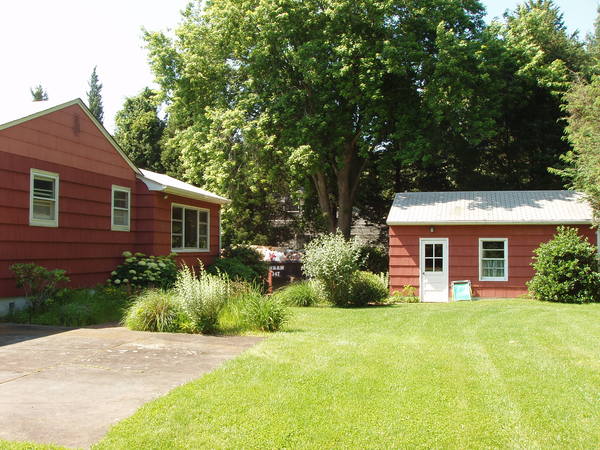
Innovative solutions from creative people can take many forms, particularly during a down economy.
According to local architects, the $3 million and up home-building industry in the Hamptons is the only sector of the market that is truly robust. Thus, those architects who have
not snagged a high-end project must find creative ways to stay busy.
Craig Rhodes, a Sag Harbor-based architect, knew work would slow down in 2009. Without enough commissions to keep him satisfied, he created his own project: buying, renovating and selling a mid-priced home.
Architect Stephen Levine, of Sagaponack, was unable to land one of the 5,000-square-foot-plus mansion projects going up on the water, so he chose to build a home for himself as a practical way to survive the recession.
Doug Muir, a Manhattan-based architect, mailed postcards to those on the East End who had recently purchased vacant land. He received a response from a property owner who wasn’t ready to build, but did need a kitchen renovated in his New York apartment.
Mr. Rhodes’s project was a solution that worked to his advantage, he reported.
“I think that what I sensed about the market was that people are looking for simpler living styles, no matter what their budget,” he said. “Downsizing is what I feel is a coming thing out here.” So Mr. Rhodes said he looked for a property in an established neighborhood that was “in transition, going from very modest to less so.”
Westwood Drive in Sag Harbor was a logical choice.
“It was near the water. The light is beachy, as opposed to woodsy, and the property was half-acre, a manageable size,” he said, adding that the house’s layout was strange so he set out to rework it within zoning limits. “It required almost a complete teardown but the basic shape of the house remains the same. The idea was to create clean, white, open interior spaces and let whoever would buy it complete it to their own decorating penchants. We sold it fairly quickly, so I guess the strategy worked.”
Mr. Levine said he admires what his fellow architect did. In fact, he completed a redesign 25 years ago, remaking a potato barn into a house.
“I do have this inclination to transform uninspired creations or exploit under-used building types,” he said. “The potato barn is an example of this. It had ventilators on the roof, and I spent the money to restore them, and added a big skylight.”
Four years ago, the property next to the barn became available, and Mr. Levine said that he decided to build a house there for himself. He knew the market would be slow for projects in the mid-priced range, he said, so he first considered buying, renovating, and selling an existing home.
“But when I ran the numbers, I backed off,” he said.
Instead, the architect decided to start with vacant land.
“The house was going to be totally new—a blank slate,” he said. “The lot was undersized, and the plan was for one story, so the footprint was big.”
The property is next to the Wölffer Stables, so Mr. Levine designed the house so the windows favor that view. Additionally, since silversmithing is his primary hobby and his wife is an artist, he designed a 75-foot-long skylight as part of the gallery.
“The whole gallery space is skylit,” he said.
Mr. Muir said that sustainability is where it’s at as far as he is concerned.
“The best way to reduce consumption and waste is to reuse existing structures,” he said. “This has been an urban phenomena for decades because of the complexities and costs of new construction in high-density areas, but also because the quality, both physical and aesthetic of many of the old structures, is timeless. Systems may need to be replaced, but the structure is often very robust. In some cases the workmanship is irreplaceable.”
Though he did garner a project from his direct mailing, Mr. Muir said he wouldn’t necessarily recommend that strategy to others.
“I would never do that kind of mailing again,” he said. “The response was too low.”
Instead, he recommended that architects focus on renovation projects when work for new buildings slows down. Though he did have a few words of wisdom to share.
“A glut on the market will provide cheaper space than new construction even with a modest renovation. Remember, the term ‘renovation’ can include anything from painting, or window replacement, to retaining nothing but part of the foundations,” he said. “It’s important to start with a good specimen. Level floors is a good litmus test. Mold and watermarks can indicate deeper problems. Understand your scope, know your limitations, zoning, budget and tolerance for stress before you get going.”